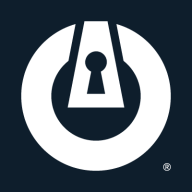

Seqrite Endpoint Security and ThreatLocker compete in the cybersecurity field, focusing on endpoint protection. ThreatLocker appears to have the upper hand due to its strong integration, comprehensive access management, and user control features.
Features: Seqrite Endpoint Security emphasizes inventory, asset management, and data loss prevention (DLP), alongside quick scanning capabilities. ThreatLocker offers application control, allowlisting, and ring-fencing in addition to its Zero Trust capabilities.
Room for Improvement: Seqrite needs better ransomware detection, stability, and scalability. Enhancements are also desired in their DLP features and user management. ThreatLocker would benefit from more flexible training options and UI improvements, as well as minimizing network saturation during policy updates.
Ease of Deployment and Customer Service: Both solutions support deployment options such as on-premises and cloud. Seqrite is noted for consistent customer support, though delays and responsiveness issues are reported. ThreatLocker’s support needs improvement in transparency and proactive resolutions, facing critiques for sometimes blaming user environments.
Pricing and ROI: Seqrite offers affordable pricing compared to other leaders like McAfee, making it attractive to small and medium enterprises with reported cost savings. ThreatLocker's pricing is flexible and justifiable by its features, though some find it slightly high. Its ROI is noted in consolidating security tools and efficient threat management.


Seqrite Endpoint Security is a comprehensive security platform used to protect enterprise networks and connected devices from advanced threats. To do so, it integrates with innovative technologies such as Anti Ransomware, Advanced DNA Scan, and Behavioral Detection System.
Seqrite Endpoint Security Features
Seqrite Endpoint Security has many valuable key features. Some of the most useful ones include:
Seqrite Endpoint Security Benefits
There are several benefits to implementing Seqrite Endpoint Security. Some of the biggest advantages the solution offers include:
Reviews from Real Users
A Manager IT at a healthcare company says, “We use the solution for managing our main product, antivirus, and device locking. There are many features available in this solution, such as asset management. It is easy to install and stable.”
ThreatLocker Zero Trust Endpoint Protection Platform offers robust endpoint security through application control and allowlisting, safeguarding servers and workstations from unauthorized software execution.
ThreatLocker Zero Trust Endpoint Protection Platform provides extensive application control with features like ring-fencing and selective elevation, ensuring meticulous execution management. Offering learning mode and extensive support, it integrates threat detection and activity monitoring to enhance compliance, reduce costs, and bolster cybersecurity through alerts and approvals. Despite its strengths, there are areas for improvement in training flexibility, policy updates, and interface enhancements, along with challenges in handling non-digitally signed software. Deployed across environments, it works well with existing cybersecurity instruments for real-time threat prevention.
What are the top features of ThreatLocker?ThreatLocker Zero Trust Endpoint Protection Platform is widely implemented to safeguard IT infrastructures against unauthorized access and application use. In sectors where data security is paramount, this platform enables users to prevent unauthorized software installations and control device applications, ensuring real-time threat prevention and compliance with industry regulations.
We monitor all Endpoint Protection Platform (EPP) reviews to prevent fraudulent reviews and keep review quality high. We do not post reviews by company employees or direct competitors. We validate each review for authenticity via cross-reference with LinkedIn, and personal follow-up with the reviewer when necessary.